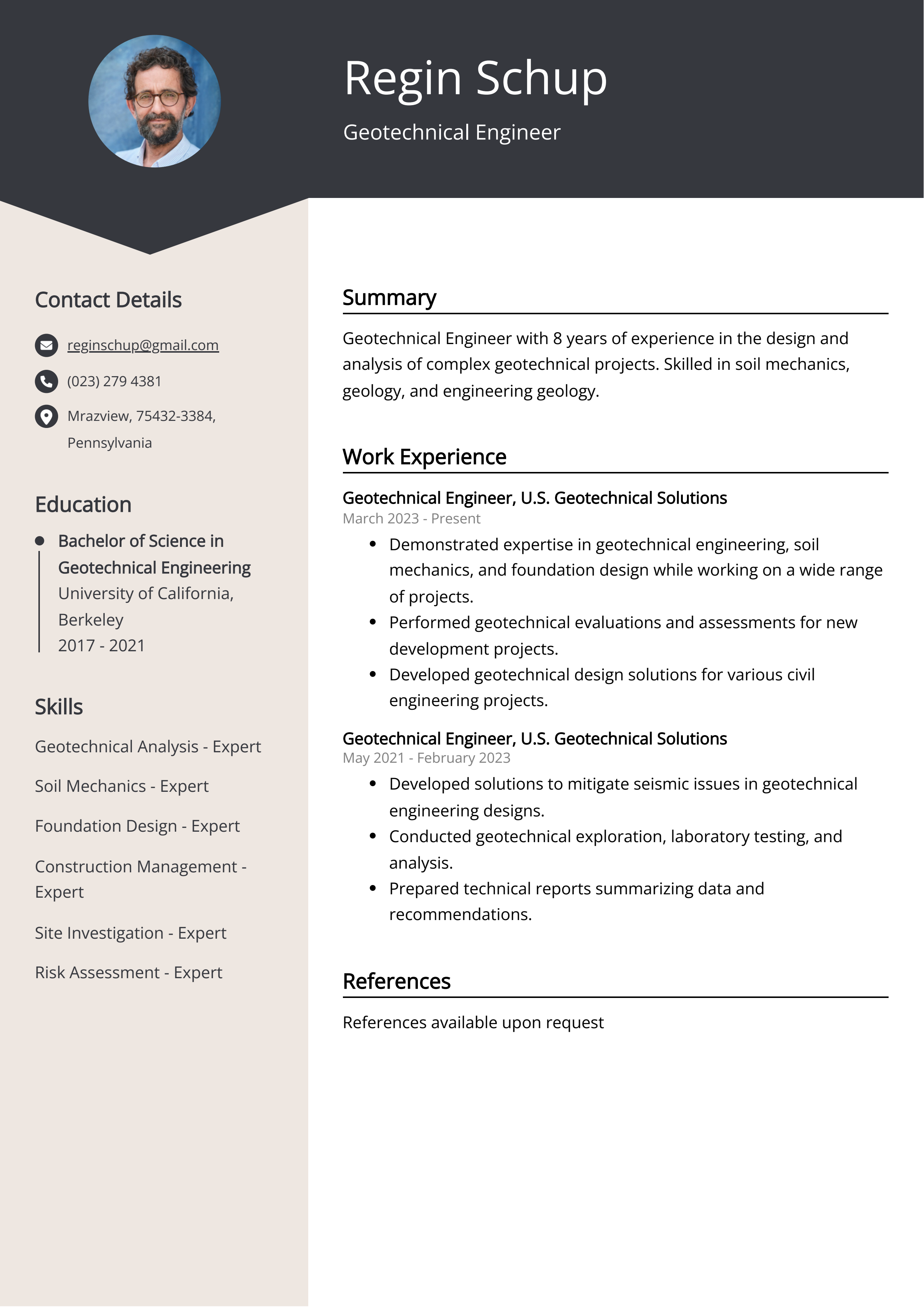Geotheta Fundamentals Explained
Wiki Article
The Buzz on Geotheta
Table of ContentsThe smart Trick of Geotheta That Nobody is Talking AboutGeotheta Can Be Fun For AnyoneA Biased View of Geotheta8 Simple Techniques For Geotheta
They collaborate with civil engineers, structural designers, designers, and various other experts to incorporate geotechnical factors to consider right into the overall project layout and building and construction process. This calls for reliable team effort, sychronisation, and communication to ensure that the geotechnical facets straighten with the job objectives and meet regulatory needs.Mining & Products Engineering: Concepts of drilling, penetration rates, and factors affecting the selection of exploration approach. Attributes of explosives, shooting systems and blast patterns. Blowing up strategies in surface area and below ground operations. Unique blowing up techniques at excavation perimeters. Resonance and noise control. Mechanical and constant methods to fragmentation, consisting of longwall shearing and fullface boring.
Modelling of piece and fragment size circulations; comminution as a transfer function. Comminution innovation: crushing, grinding, dimension classification. Integrated evaluation of fragmentation and comminution operations. Provided by: Mining & Products Engineering.
10 Simple Techniques For Geotheta
Bachelor's degree programs in civil, geotechnical, geological, and environmental engineering normally last four years and consist of basic education programs in English, social science, and the liberal arts, in addition to programs in sophisticated maths, architectural geology, and liquid mineralogy. (https://slides.com/geotheta)Geotechnical engineering entails the assessment of the soil and rock problems at a specific website, and their effects for the growth of that site. As most structures depend on the ground for support, it lacks shock that a thorough understanding of the ground problems, and the suitability of foundation systems, are crucial to the long-term stability and performance of the building or framework.
Specialising in the investigation of geological developments and ground practices, geotechnical designers carry out scientific examinations and screening to understand the influence these geological developments may carry the layout and construction of building, civil and infrastructure projects. This proficiency is crucial for the layout and construction of structures, roadways, passages, dams, bridges, and water supply and sewage systems.
The geotechnical group at Douglas Partners consistently talk to engineers, style engineers, programmers, and building contractors to make referrals on design and advancement propositions to guarantee that the constructed frameworks are appropriately created for the ground problems. The layout of footing systems requires to consider the weight of the framework, the capability of the ground to support that weight with each other with motion tolerances and efficient building.
Geotheta Things To Know Before You Buy
This task is greatly streamlined by the use our Douglas Map geospatial system which makes this information easily easily accessible in an easy to make use of internet internet browser Geotechnical Engineers user interface. A geotechnical engineer will certainly route the exploration of boreholes and examination pits to collect soil and various other samples, and additionally assess surface area attributes and ground exposures to develop a geotechnical version of the subsurface conditions.Depending upon the task kind and ground problems experienced, lab testing might amongst other things analyze strength, compressibility, sensitivity and/or permeability of dirt and rock samples. Hereafter information is accumulated and looked at, the results are utilized for a geotechnical model of the site, which is usually provided as areas throughout the website.

A geotechnical examination naturally can just assess the ground conditions at the places drilled or dug deep into. All-natural variants in soil and rock problems can happen throughout a site and between examination locations. It is for that reason excellent practice that the geotechnical designer be maintained throughout building and construction of the task to give on-site verification that the ground conditions run into are consistent with the expectations and recommendations provided in the geotechnical examination report.
The Only Guide to Geotheta
Geotechnical engineers utilize their comprehensive expertise of soil and rock to assess risk and resolve problems on varied infrastructure projectsGeotechnical engineering is a specialist branch of civil engineering which takes a look at the behavior of earth materials and the application of dirt and rock technicians. Geotechnical Engineers. As a geotechnical designer, you will certainly evaluate the physical, mechanical and chemical residential properties of dirt and rock in order to make foundations, maintaining frameworks and earthworksGeotechnical design is closely linked to and overlaps with, both engineering geology and ground engineering - https://www.openstreetmap.org/user/geotheta. It's possible to be experts in geotechnics or job for a geotechnical business however be understood as a design rock hound or a ground engineer. As a geotechnical engineer, you'll need to: develop and preserve connections with customers and other experts entailed in the site, throughout each projectmaintain safety and security standards on site bear in mind cost effects when you make recommendationsstudy geological maps and aerial pictures from a variety of sources and from various time periodsexamine building prepares to see how feasible they are based upon your understanding of the siteinvestigate threats or geological dangers for the sitesearch for eco sensitive features, such as land fill start to develop accurate and interpretive ground modelsplan area investigationsdrill and analyse examples of bedrock, soil, groundwater and added materials oversee other specialists on sitesolve technological concerns as they occur, such as unforeseen structures at drill sitesmonitor problems throughout and after construction to see to it structures are stable in the brief and long termadding data accumulated on website to your preliminary researchcreating geotechnical estimations, illustrations, and 2 or three-dimensional computer versions analyzing the datamaking referrals regarding the recommended use the website

Report this wiki page